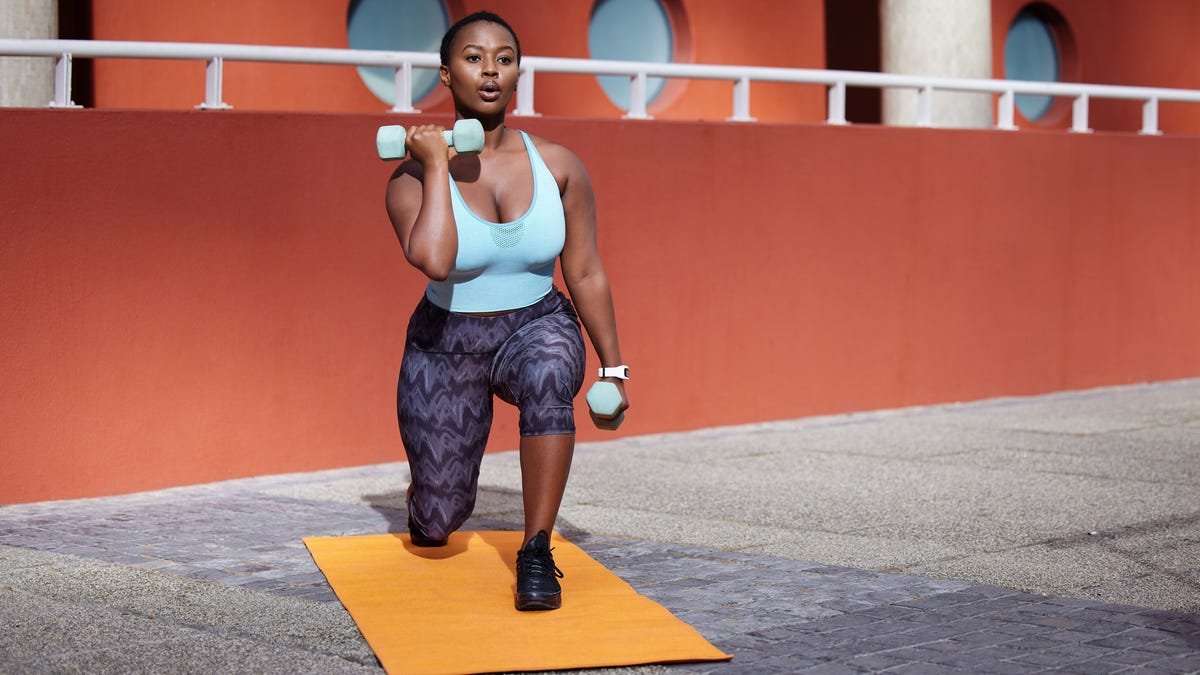The 3 Best Weight-Loss Workouts


It’s no secret that physical activity is important. After all, even just 15 minutes of exercise each day can make a difference in your health. The best part is that there are ways you can personalize your workout to help you meet your fitness goals, whether you want to maintain your strength as you age or are focused on the best weight-loss workouts.
Many forms of exercise can help raise your heart rate, which allows you to burn calories. But after that, things can get confusing. With so many options — and many claiming to be the “best program” that guarantees the “best results” — it can be difficult to know which workouts are most likely to help you achieve the results you want for the time you invest.
All exercise can improve mental health and provide many benefits besides losing weight. But if you’re feeling stuck in your current routine or want to try new exercises that may help you lose weight more efficiently and effectively, these three expert-approved exercises can help.
By the way, there’s nothing wrong with doing exercises outside of this list or just for the sake of enjoying it.
1. Cardio
The first exercise that many people do when they want to lose weight is cardio. While cardio is great for elevating your heart rate and burning calories, it’s not the most efficient exercise you can do for weight loss. Cardio is important for losing weight, but to really take your results up a notch, you must also add some exercises that build your muscles. Cardio is an important part of any exercise routine, and you should include it in your weekly routine along with strength training.
Cardio intervals vs. steady-state training
Not all cardio is the same when it comes to weight loss. Any type of cardio is important to include in a well-balanced workout program, but the two main types are steady-state and interval-based.
Cardio intervals: Cardio intervals can consist of any exercise you enjoy (running, jogging, walking, cycling) — except you alternate intense periods with lower-intensity periods to recover, like alternating jogging with a sprint. The intense periods are shorter (like one to two minutes), and you usually recover for about twice that time (two to four minutes), depending on the workout.
 Getty Images
Getty Images
Steady-state cardio: Steady-state cardio is when you do any exercise, like running or cycling, and stay at a steady pace. It’s effective for improving your endurance and stamina and will help you burn calories since you increase your heart rate, although it will likely stay lower than in the cardio interval range. Regarding weight loss, research shows that interval training, like HIIT, is more effective than doing cardio at a steady pace. Many people will alternate steady-state cardio session days with interval-based cardio days. There are also many different cardio workouts to choose from, such as biking, jogging, walking and dancing, and just because weight loss is a goal does not mean you have to do something high-impact that’s hard on your joints.
High-impact vs. low-impact cardio
While both forms of cardio are effective, if you are concerned about your joints keeping up with your new workout routine, or you know that previous injuries limit you from doing high-impact movement, low-impact cardio is a great option. You can combine low-impact cardio with bodyweight exercises, like with LIT Method, a low-impact, high-intensity workout.
“Compound low-impact movements are the best exercises for weight loss as these movements involve multiple major muscle groups, resulting in max calorie burn and save your joints,” says Justin Norris, a personal trainer and co-founder of LIT Method. “Some of these exercises include squats, inchworms, modified burpees and marchers. All of these low-impact exercises are high-intensity movements that are guaranteed to elevate your heart rate and allow you to work out more frequently.”
2. Strength training
–>
 Getty Images
Getty Images
Strength training, with your body weight or lifting weights, is one of the most effective ways to lose weight. Why? First, lifting weights can help you lose fat while building muscle, which is awesome for your metabolism. Muscle mass burns more calories than fat, which means you burn more calories every day when you have more muscle – even while sleeping.
Muscle mass does not make up for the nutrition side of weight loss, but it can help. Remember, it’s your choice whether you use lighter or heavier weights, but both weight categories require a different approach to building muscle effectively. In general, lighter weights require more reps and sets, and heavier weights require fewer reps and sets.
Strength training often involves using dumbbells or weight machines, but you really don’t need extra equipment to build strength. Using your own body weight as resistance is also a highly effective and convenient way to workout.
“Strength training is key in weight loss because the more muscle you have on your body, the more calories you burn,” says Bryna Carracino, a fitness coach and founding trainer of beRevolutionarie. “The more lean muscle you have on the body, the higher your metabolism runs, which in turn promotes healthy weight loss.”
Full-body strength training workout by Bryna Carracino
Dumbbell squat
–> Bryna Caracino
Dumbbells racked either resting on shoulders or back of dumbbells pressed into the front shoulder. If you’re a beginner, you can leave the dumbbells by your side.
Think of a squat like you’re sitting into a chair. Press your booty back, lowering your body with your chest pressed forward. Pull all 10 toes off the ground so you’re sitting back into the posterior (back part of body). As you start to drive back up, press weight through your heels, engaging glutes and hamstrings back to standing position.
Medicine ball wood chop
 –>
–>




